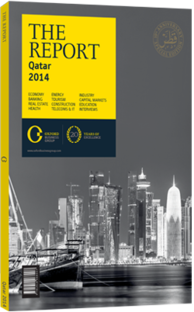A new beginning: The Cabinet has seen promising changes
One of the most significant – and well documented – events of 2013 was the transition of power from the former Emir, Sheikh Hamad bin Khalifa Al Thani, to Sheikh Tamim bin Hamad Al Thani, his fourth son and second son with Sheikha Moza bint Nasser. To the outside world, the June announcement was seen as an unprecedented move, as it is the first time a monarch in the Gulf had peacefully handed over power to an heir while still alive. However, inside Qatar, it was well known that the former Emir had been preparing his son to take over as the head of state for quite some time. Sheikh Tamim has been heavily involved in issues at the highest levels, both economically and politically, for the past several years. He has also played an important part in shaping the country’s development strategy, Qatar National Vision 2030.
New Line Up
With the change in leadership came a flurry of other changes. Starting at the highest level, the Cabinet was revamped and new developments began to trickle down through ministries, government organisations and state-owned companies. The overhaul of the Cabinet has been well received, ushering in a new era and a younger generation of ministers. The first appointment was Sheikh Abdullah bin Nasser bin Khalifa Al Thani as new prime minister, who replaced Sheikh Hamad bin Jassim bin Jabr Al Thani – a key figure in Qatar’s development under the former Emir. Sheikh Abdullah, who was previously the minister of state for interior affairs, is now minister of the interior in addition to his new position as prime minister.
Notably, the portfolio for foreign affairs was separated from the Prime Ministry and Khalid bin Mohammed Al Attiyah was appointed minister of foreign affairs. Previously the minister of state for foreign affairs, Al Attiyah was in a good position to inherit oversight for diplomatic relations for the regional heavy hitter. Many analysts believe that this signals a change in strategy from the previous prime minister, with Sheikh Abdullah focusing more on domestic issues given the nature of his prior responsibilities as the minister of interior.
Mohammed bin Saleh Al Sada, Sheikh Abdul Rahman bin Khalifa Al Thani and Abdulla bin Khalid Al Qahtani all maintained their respective ministerial posts for energy and industry, municipality and urban planning, and health. The minister for culture, arts and heritage, Hamad bin Abdulaziz Al Kuwari, and the minister of endowments and Islamic affairs, Ghaith bin Mubarek Al Kuwari, also kept their positions in the new Cabinet.
In addition, two new key ministers have been brought in from the private sector. Sheikh Ahmed bin Jassim bin Mohamed Al Thani, previously the director-general of international news network Al Jazeera, took over as the minister of economy and commerce, and Ali Shareef Al Emadi, previously the group CEO at Qatar National Bank, took over as minister of finance.
Fresh Start
Along with the new faces in the Cabinet came the creation of several new ministries. The Ministry of Information and Communications Technology was created and is helmed by the only female member of the Cabinet, Hessa Sultan Al Jaber, formerly the secretary-general for the Supreme Council of ICT.
The chairman of government-owned transport firm Mowasalat, Jassim Seif Ahmed Al Sulaiti, was appointed the new minister of transport, and is expected to oversee vital transport projects such as Qatar Rail, the New Port Project and the new airport. Additionally, given the importance of sport to the nation’s development, a Ministry for Youth and Sports was established that absorbed some of the responsibilities of the Qatar Olympic Committee and the Ministry of Culture, Arts and Heritage. The strategy of this particularly ministry is still being developed and its mandate should be more clearly established by mid-2014.
Finally, two existing government institutions have been merged and transformed into ministries. The General Secretariat for Development Planning was merged with the Qatar Statistics Authority to create the Ministry of Development Planning and Statistics, and the Institute of Administrative Development was upgraded to the Ministry of Administrative Development.
You have reached the limit of premium articles you can view for free.
Choose from the options below to purchase print or digital editions of our Reports. You can also purchase a website subscription giving you unlimited access to all of our Reports online for 12 months.
If you have already purchased this Report or have a website subscription, please login to continue.

